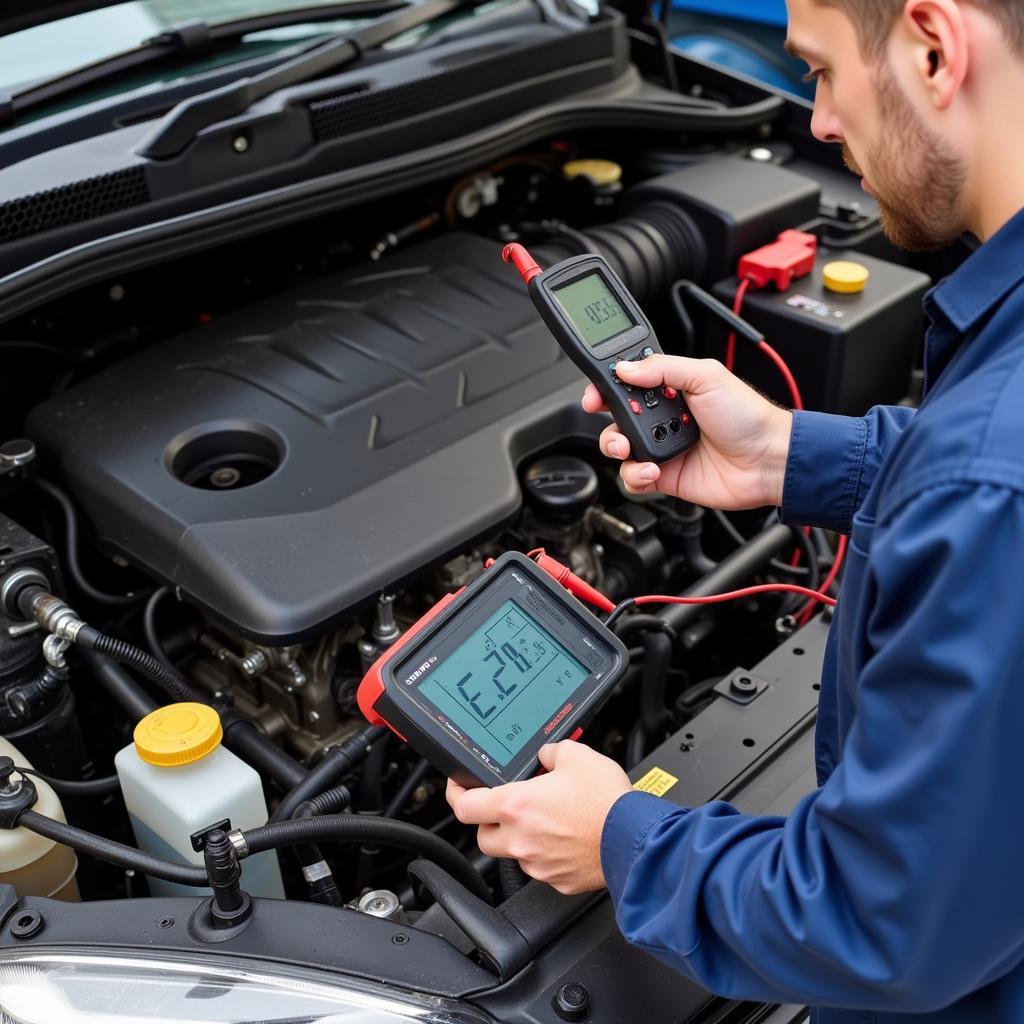Experiencing car engine problems after a dealership inspection can be incredibly frustrating. You take your car in for a check-up, expecting it to run smoother, not worse. What’s going on? This article will explore common reasons for car engine problems appearing after a dealership inspection, provide solutions, and guide you on how to address the situation effectively.
Similar to linkage problem in car, sometimes issues can arise unexpectedly. A seemingly routine inspection can sometimes uncover underlying issues that were previously masked, or in rare cases, even cause new problems. Let’s delve into the potential causes and find out what you can do.
Common Causes of Car Engine Problems After Dealership Inspection
Several factors can contribute to car engine problems surfacing after a dealership visit. Sometimes, the inspection itself reveals a pre-existing problem that wasn’t previously noticeable. Other times, a repair performed during the inspection might inadvertently trigger a new issue. It’s also possible that the issue is completely unrelated to the inspection.
Pre-Existing Problems Unmasked by the Inspection
A thorough inspection can bring to light hidden problems. Perhaps a worn component was nearing its end-of-life and the inspection simply accelerated its demise. This is especially common with things like spark plugs, belts, and hoses.
Issues Triggered by Repairs
Sometimes, a repair performed during the inspection might inadvertently cause a new problem. For example, replacing a faulty sensor might expose a weakness in the wiring harness. Or, disturbing a component during the inspection might exacerbate an existing, minor issue.
Unrelated Problems
It’s also possible that the engine problem is entirely unrelated to the dealership inspection. Perhaps a different component failed coincidentally, or perhaps the issue was developing gradually and simply became noticeable after the inspection.
What to Do When Engine Problems Appear After a Dealership Inspection
If your car starts experiencing engine problems after a dealership inspection, don’t panic. Here’s a step-by-step guide to help you navigate the situation:
- Document the Problem: Note the specific symptoms, when they started, and any unusual noises or smells.
- Contact the Dealership Immediately: Explain the situation calmly and clearly. Provide them with the details you’ve documented.
- Return to the Dealership for Re-inspection: Allow the dealership to re-inspect your car and diagnose the problem.
- Review the Diagnosis and Proposed Solution: Ask questions and ensure you understand the problem and the proposed solution.
- Negotiate a Resolution: If the problem is related to the inspection or repairs performed, work with the dealership to find a fair solution, whether it’s a free repair, a discounted repair, or a refund.
Understanding Your Rights and Options
It’s essential to understand your rights and options when dealing with car engine problems after a dealership inspection. You might find yourself in a situation similar to 2 problems with used car in 2 weeks. Remember, clear communication and documentation are crucial.
Warranty Coverage
If your car is still under warranty, the repairs might be covered. Review your warranty documentation carefully.
Lemon Laws
If you’ve experienced repeated problems with your car, you might be protected under your state’s lemon laws. Consult with a legal professional to understand your rights.
“Dealerships are responsible for ensuring their work doesn’t cause further damage,” says automotive expert, John Miller, ASE Certified Master Technician. “A thorough diagnostic process is essential after any repair to prevent cascading issues.”
 Mechanic using diagnostic tools on a car engine
Mechanic using diagnostic tools on a car engine
Preventing Future Issues
While you can’t always predict car engine problems, there are steps you can take to minimize the risk:
- Regular Maintenance: Follow the manufacturer’s recommended maintenance schedule.
- Choose a Reputable Dealership: Select a dealership with a good track record and certified technicians.
- Communicate Clearly: Clearly explain any existing problems or concerns to the dealership.
- Keep Records: Maintain detailed records of all inspections and repairs.
Like exploring the common issues associated with rental cars sold in summer 2018 west virginia problems, understanding the potential problems can be beneficial in preventing them. Be proactive in maintaining your vehicle and addressing concerns promptly.
“Preventive maintenance is the key to avoiding costly repairs down the line,” advises Sarah Chen, a certified automotive engineer. “Regular checks can identify potential problems before they become major headaches.”
In conclusion, Car Engine Problems After Dealership Inspection can be frustrating. However, by understanding the potential causes, knowing your rights, and following the steps outlined above, you can effectively address the situation and get your car back on the road. Don’t hesitate to contact us at AutoTipPro for further assistance. Our phone number is +1 (641) 206-8880 and our office is located at 500 N St Mary’s St, San Antonio, TX 78205, United States. We’re here to help!
 Happy car owner driving their car after a successful repair
Happy car owner driving their car after a successful repair
Similar situations can be found when trying to find solutions for car sales project problems and solutions. By understanding the challenges, better solutions can be devised. Remember to communicate effectively with your dealership to achieve the best possible outcome. Having car engine problems after a dealership inspection is challenging, but manageable with the right approach.




Leave a Reply